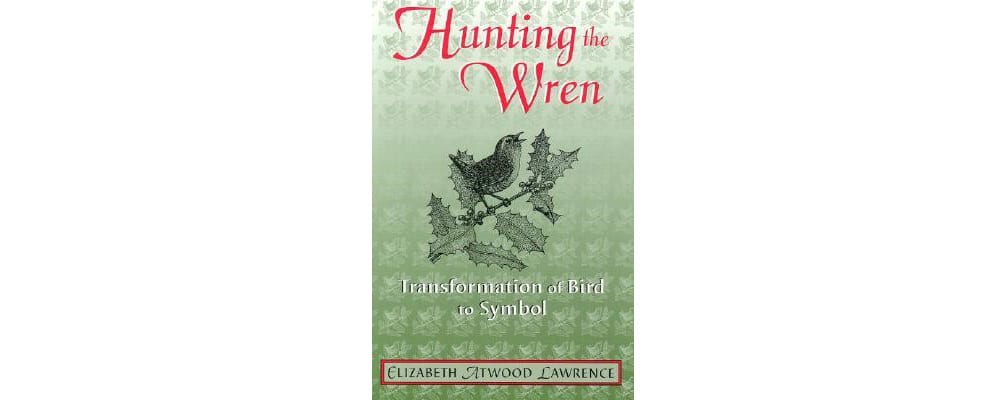
Dec 19, 2019 “Hunting the Wren – A Holiday Bird” by Elizabeth Atwood Lawrence
Posted at 09:11h
Reviewed by Andrew Rowan – There are many celebrations involving animals around the world. Many will be familiar with the story of Peter and the Wolf and the version put to music by Prokofiev (his most frequently performed work) where each animal is represented by an instrument (the wolf is represented by the French horn). But, at this time of year, we are also regaled with scenes featuring cardinals, robins, penguins, sheep, donkeys, camels and, of course, reindeer! However, one of the stranger customs at this time of year is the hunting of wrens, a tiny European songbird, on December 26 (St. Stephens Day) reportedly because their chattering gave away St. Stephens’ hiding place according to one Irish legend.
A former colleague of mine, veterinary anthropologist E.A. “Betty” Lawrence, produced a book on this custom, entitled Hunting the Wren: Transformation of Bird to Symbol (1997, University of Tennessee Press) that was characteristic of her investigations of the meaning of human-animal interactions. As she notes in the Preface, she started looking at the practice of hunting wrens to answer the question why, in certain areas of Britain and Europe, would this tiny brown (and beloved) song-bird be hunted and killed on just one day of the year. Her book is a symbolic study of human relationships with nature and, in this instance, specifically with one tiny part of Nature, the bird identified by the species name, Troglodytes troglodytes.
I remember speaking to Betty about the choice of topic for this book (her last big writing project before her death) because most of her books until then had dealt with human-horse relationships. Betty explained that none of the many cases of animal symbolism that she had come across to that point in her career seemed to her to be so vivid, so complex and so tenacious, as the symbolizing of the wren.
She also notes in the book’s preface that this is a particularly challenging time for nature. The domain of the wild is steadily being reduced as the domesticated realm takes over wild spaces to feed and support an ever-larger human population (now over 7.7 billion and projected to reach 11 billion by 2100). Betty felt that it was important to understand not just the ecology of the animals in our orbit but also their symbolic roles. As an anthropologist, she was convinced that we also needed to understand the symbolism of animals in order to explain some of the ways animals are treated by people.
As we consider the meaning of the various celebrations this holiday season and the role that animals play as symbols and participants (at times unwilling participants), spare a thought for the tiny Eurasian wren and all its avian cousins that grace so many of the greeting cards we send to one another at this time of year.
Hunting the Wren: Transformation of Bird to Symbol (1997, University of Tennessee Press).


